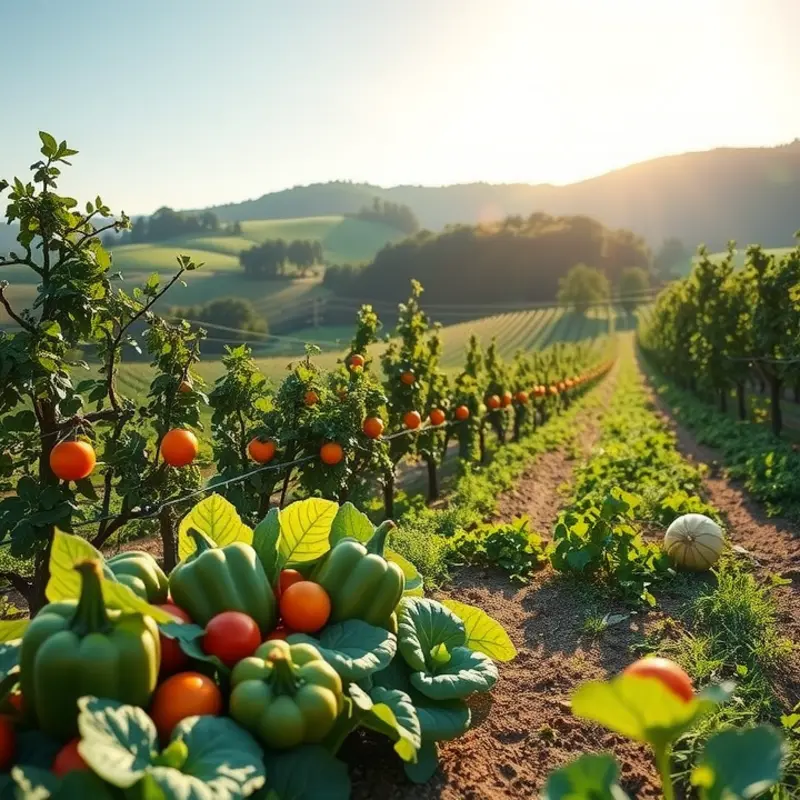From fragrant rice to crisp vegetables, traditional side dishes tell stories of cultural heritage and community. Each country boasts unique flavors and preparations that enhance meals and reflect local ingredients and customs. By exploring these culinary traditions, food enthusiasts and culturally curious readers can deepen their appreciation for global cuisines and the rich tapestry of tastes that accompany main dishes. Dive into a world where every spoonful offers a glimpse into the heart of a nation.
A Taste of Tradition: Side Dishes from Asia

Asia, with its vast cultural tapestry, offers an exquisite array of side dishes that serve as the backbone of its culinary heritage. These accompaniments not only enhance main meals but also tell stories of local traditions and regional variations.
In Japan, side dishes are an essential part of any meal. One of the most celebrated is tsukemono, or pickled vegetables. These colorful, tangy treats use ingredients like cucumbers, daikon radish, and eggplant, fermented in a mixture of rice bran, salt, or vinegar. The slight tartness of tsukemono balances the richness of main courses, while their probiotics offer subtle health benefits. Learn more about probiotics and their non-dairy sources here.
Traveling to Korea, banchan takes center stage. Plates of kimchi, namul (seasoned vegetables), and jeon (savory pancakes) create a vibrant mosaic that complements any Korean dish. Kimchi, Korea’s fermented staple, varies in flavor depending on the spices and the type of vegetables. Each region of Korea boasts its variant, showcasing unique tastes and textures that speak to local agricultural bounty.
In China, there is a deep appreciation for harmony in meal preparation that extends to their side dishes. One such dish is xiao long bao, or soup dumplings. These delicate parcels, filled with broth and mincemeat, offer an exciting mix of umami and warmth. Their popularity varies regionally, with the wrapping methods and fillings slightly differing between the northern and southern regions.
Moving south to Southeast Asia, we encounter the exciting flavors of Thailand. Here, som tam, a spicy green papaya salad, accompanies many meals. This dish combines sour, sweet, salty, and spicy elements harmoniously. The shreds of green papaya, peanuts, and chilies, often mixed with lime and fish sauce, tell a tale of balance and contrast that characterizes Thai culinary principles.
India’s culinary diversity is enormous; side dishes are no exception. Consider dal, a spiced lentil stew that forms a part of daily meals, particularly in the northern regions. The lentils are simmered with turmeric, cumin, and coriander, reflecting the country’s warm spice palette. As you venture to the south, dal can change in consistency and spices, highlighting regional adjustments and preferences.
The art of crafting these side dishes is more than just about taste—it’s a cultural expression. Each ingredient and preparation method carries historical and spiritual significance, deeply intertwined with local identity and traditional practices.
In essence, the side dishes of Asia serve more than mere accompaniment; they are the unseen heroes of the meal. These timeless creations embody the rich history, local flavors, and community values of each culture. From the intricate fermentation processes in Japan to the bold flavors of India, these side dishes draw a vibrant picture of culinary traditions that have been cherished through generations.
Flavors of Europe: Iconic Side Dishes

Europe’s culinary landscape is rich with side dishes that not only enhance main courses but also stand as symbols of regional identity. Let’s embark on a tour from the lush green landscapes of Ireland to the sun-drenched coasts of the Mediterranean, discovering how these side dishes reflect a melding of history, geography, and local resources.
Starting in Ireland, we find ourselves enveloped by the warmth of a dish known as colcannon. This hearty side, composed of mashed potatoes mingled with kale or cabbage, is a staple in Irish homes. Potatoes, introduced to Europe from the Americas in the 16th century, became integral to the Irish diet due to their adaptability in poor soil conditions. Today, colcannon is more than sustenance—it’s a nostalgic comfort food that appears during festive gatherings.
Crossing over to Eastern Europe, pierogi demonstrate the resilience of traditional cooking. These dumplings, filled with ingredients ranging from potatoes to cheese or mushrooms, have roots in Poland. Pierogi can be both a side and a main dish, illustrating how flexibility in preparation—a boiling and frying combination—caters to seasonal ingredients and regional tastes. With autumn’s bounty, fillings evolve to incorporate local harvests, further embedding them in Polish gastronomic culture.
Venturing southward to Italy, one cannot overlook the importance of risotto in the Italian dining experience. This creamy rice dish harnesses the power of the country’s abundant rice paddies, particularly in the northern regions. Risotto, cooked slowly with broth until reaching a perfect al dente texture, highlights how Italian cuisine focuses on the quality of ingredients like Arborio rice. The versatility of risotto allows for endless variations—each conveying a regional story and a reflection of Italy’s diverse agricultural wealth.
In the Mediterranean reaches of Greece, horiatiki, or Greek salad, is a testament to the simplicity and flavor of local produce. This salad features robust olives, juicy tomatoes, crunchy cucumbers, and a generous splash of olive oil, epitomizing the Mediterranean diet’s health benefits. The emphasis on fresh, sun-ripened ingredients accessible throughout the year enables Greek salad to maintain its spot as a refreshing complement to any meal.
These side dishes reflect not only regional flavors but also the deep-seated traditions each culture holds dear. Europe’s gastronomic chronology is layered through colonization, migration, and trade. For an exploration of how trade influences culinary traditions, see Culinary Influences from Trade.
Incorporating these iconic sides into daily meals invites a worldly experience to the table, transforming simple dinners into cultural explorations. As we savor the diverse range of flavors, we connect to Europe’s rich, palatal history, making each bite an homage to generations past.
Final words
Traditional side dishes provide not just flavor but also cultural context and connections to the land and people they come from. Each region shares its distinctive culinary practices through these delightful accompaniments, enriching the overall dining experience. As we embark on culinary explorations, let us appreciate the subtle nuances that differentiate each culture’s approach to side dishes. These foods are more than mere enhancements; they are reflections of history, tradition, and communal love that deepen our understanding of global cuisine.








